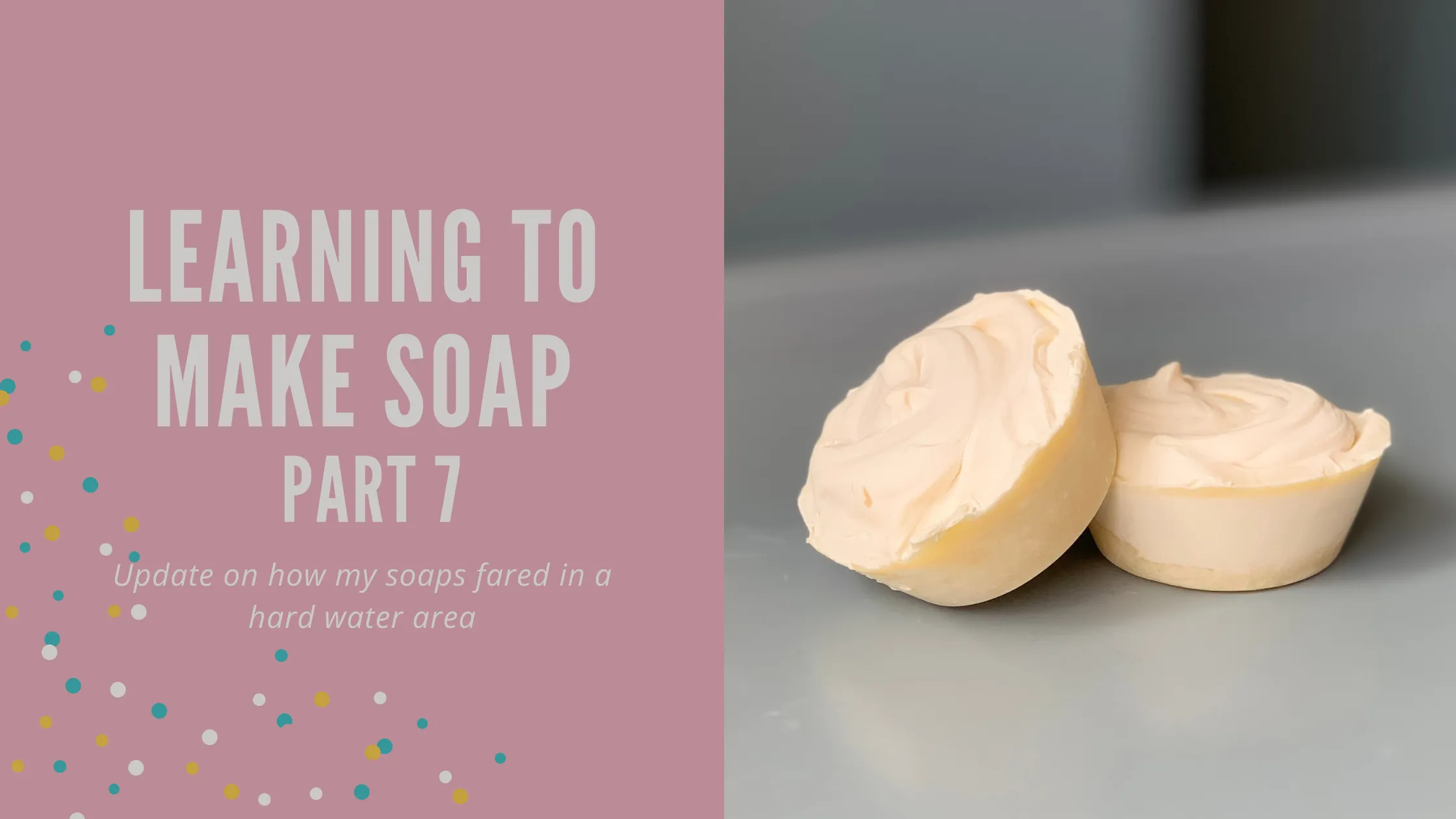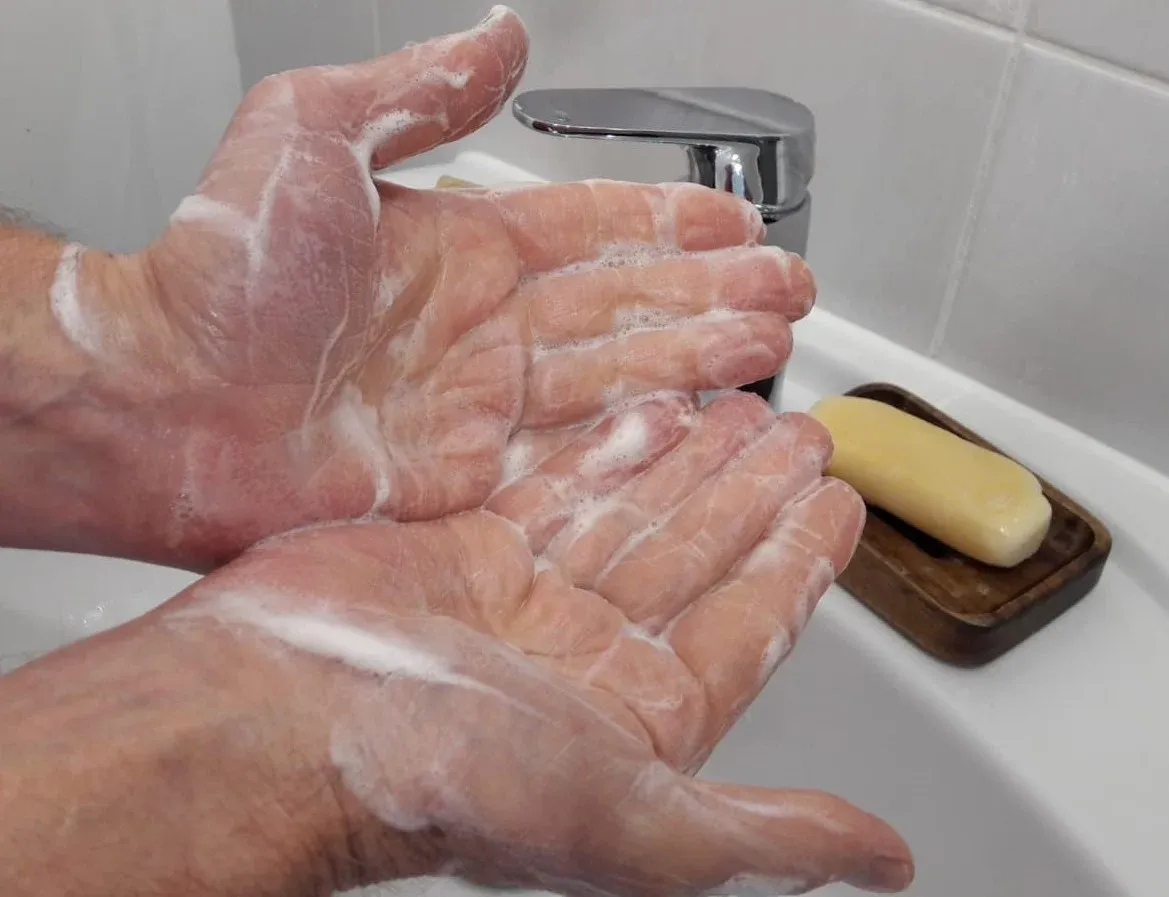Learning to Make Soap: Part 7
Update on how my soaps fared in an hard water area

I thought that this week I would report back on how my soaps have fared at my Mum and Dad's. If you remember from my learning to make soap blog I had sent my soaps to them because they live in a hard water area and there was a possibility (due to the high mineral content) that this may effect how the soaps cleaned and how bubbly they were.
I'm very pleased and relieved to report that that the soaps have been performing very well at my parents. They are currently using one for hand soap and one in the shower and they get a good lather for both soaps (for a hard water area).

They have reported back that the soaps feel moisturising and it doesn't make their hands feel dry or stripped of their natural oils. My mum has even used it on her face and didn't make her face feel dry or tight. They have had experience with soaps cracking and so far no cracking or falling apart for my soaps (phew!). And they like the two scents too (Mandarin, Ginger and May Chang and Eucalyptus and Peppermint), which is a relief as I really like them and was keen to have them in my first range (very exciting). So overall I think it is fair to say they like my soaps and they said that out of all the soaps they have tried they prefer my soaps (I do appreciate they might be a bit biased)! But even so, how lovely is that - thanks Mum and Dad 💚.
The only thing so far that I am not 100% happy with the soaps is the fact that I don't feel they are lasting long enough. I think this is a fairly common issue for a new soap maker as you tend to focus on bar hardness, bubbles and conditioning rather than how long the bars would last. But in the more recent soaps there is a notable difference to how long they are lasting compared to previous soaps I have made!
So what determines longevity of a soap? Well it is the levels of palmitic and stearic acid. And part of the reason why I am having a few issues with this is because my soaps are palm oil free which is naturally high in palmitic acid (~60%). Some soap makers get around this by using tallow/lard which do contain about 30% palmitic acid. But as a vegetarian that isn't an option for my soaps.
So what can I do? Luckily there are some other plant based butters that have medium to high levels of stearic and palmitic acid. I have been testing a combination of shea butter (high in stearic acid; 40%) and cocoa butter (medium levels in both - palmitic; 28% and stearic; 33%) to help increase the levels of palmitic and stearic acid in my soaps. So this week I have designed a number of soaps that should last a little longer.
I think (maybe read as worry) about the impact the ingredients I use in my soaps may have on both people and the planet. Palm oil is a definite no from my point of view currently - I know there are sustainable options available but Greenpeace and others don't feel the Roundtable on Sustainable Palm Oil (RSPO) are doing enough to prevent the destruction of the Rainforest and sadly many RSPO certified growers are still involved in deforestation. If you are interested you can read more about this in an article for the Independent and from Greenpeace.
Also the farming and production of both cocoa and shea butters are associated with exploitation, discrimination and extreme poverty so it really is important that the butters used in my soaps are fair trade as well as organic to ensure the farmers are fairly treated and fairly paid. To learn more about the plight of cocoa farmers and why fairtrade is so important, you can read this article. Ultimately this will mean my soaps are a little bit more expensive but if I am honest I would rather that than think that the ingredients used in my soap were a factor in people being unable to get out of poverty.
In fact as this weekend is Easter weekend and as shea butter, cocoa butter and palm oil are ingredients commonly found in Easter eggs, it might be worth considering what ingredients are in your chocolate this weekend and where they came from. Remember a small change makes a big difference and consumers making these Fair Trade and/or sustainable choices helps send a message to manufacturers that although you love chocolate you need them to take responsibility for preventing deforestation of the rainforest and ending poverty and exploitation of the people that harvest the ingredients. We all have the opportunity to be the change and just by taking a few moments to look at the ingredients in the items we all buy can really make a difference. A Small Kindness 💚
So I am off to try out another recipe with a higher levels of stearic and palmitic acid and hopefully these bars will last a bit longer - I will report back once they have cured!
...
I am Kelly Townsend and this is the Small Kindness Blog. I am a scientist, a bee lover, a rewilding obsessive, and I want to spread Small Kindnesses through the medium of soap. Follow me on Facebook, Instagram and Twitter for your daily dose of kindness (as well as to see how the soap making is going!)
